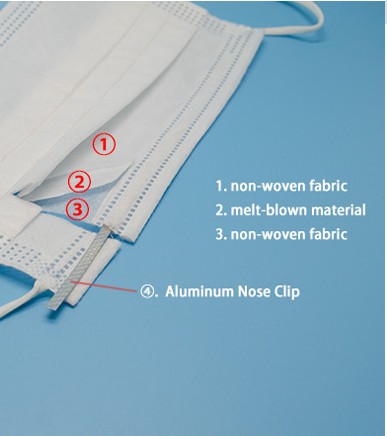
NewsInformation Center
Five ASTM Standards For Masks Testing
2020/04/27
ASTM was originally known as the American Society of the International Association for Testing and Materials when it was created in 1898 by Pennsylvania Railroad engineers and scientists. Its purpose was to address and prevent the frequent rail breaks that were plaguing the industry by developing standards that would ensure higher quality rail products.


There are five major test standards for masks as follows:
ASTM F2299/F2299M-03(2017) Standard Test Method for Determining the Initial Efficiency of Materials Used in Medical Face Masks to Penetration by Particulates Using Latex Spheres:measures the initial filtration efficiency of materials used in medical face masks by sampling representative volumes of the upstream and downstream latex aerosol concentrations in a controlled airflow chamber.
ASTM F2101-19 Standard Test Method for Evaluating the Bacterial Filtration Efficiency (BFE) of Medical Face Mask Materials, Using a Biological Aerosol of Staphylococcus aureus:offers a procedure for evaluation of medical face mask materials for bacterial filtration efficiency. This test method does not define acceptable levels of bacterial filtration efficiency. Therefore, when using this test method it is necessary to describe the specific condition under which testing is conducted.
ASTM F2100-19 Standard Specification for Performance of Materials Used in Medical Face Masks:provides for the classification of medical face mask material performance. Medical face mask material performance is based on testing for bacterial filtration efficiency, differential pressure, sub-micron particulate filtration efficiency, resistance to penetration by synthetic blood, and flammability.
ASTM F1862/F1862M-17 Standard Test Method for Resistance of Medical Face Masks to Penetration by Synthetic Blood (Horizontal Projection of Fixed Volume at a Known Velocity):offers a procedure for evaluating medical face mask resistance to synthetic blood penetration that is useful in establishing claims for penetration resistance performance of medical face masks and ranking their performance. However, this test method does not define acceptable levels of penetration resistance because this determination must be made by each responsible user organization based on its own specific application and conditions. Therefore, when using this test method to make claims for the performance of medical face masks, the specific conditions under which testing is conducted must be described.
ASTM F1494-14 Standard Terminology Relating to Protective Clothing:Definitions of Terms, which were drafted for use only in a single standard, are also included for convenient reference. Under ASTM rules they may become full definitions in the future, if they are used in additional standards.
Previous: Surgical Face Masks For Health Care
N e x t : Protective Clothing and Personal Protective Equipment (PPE)



